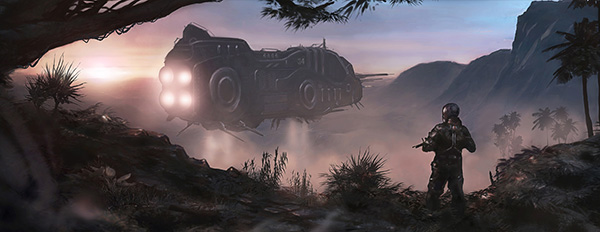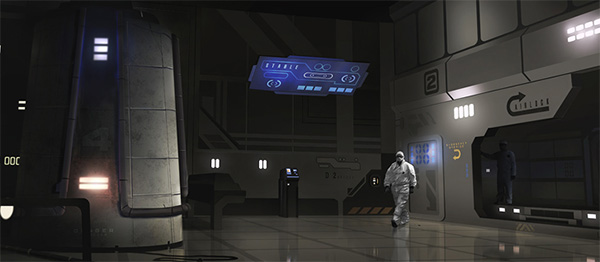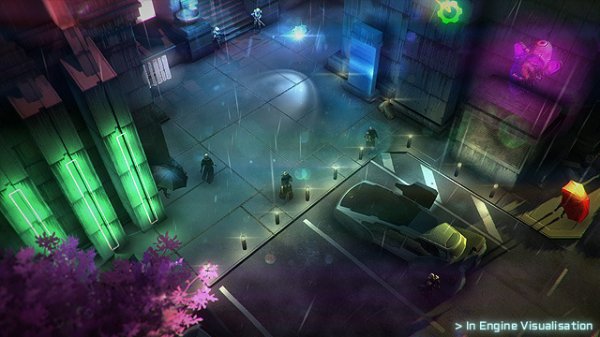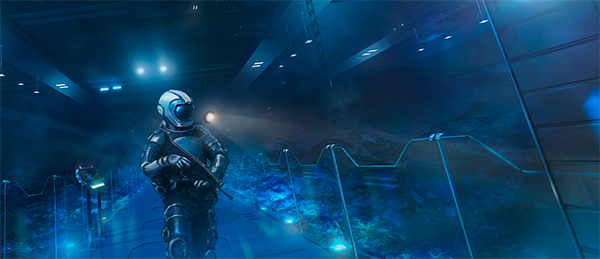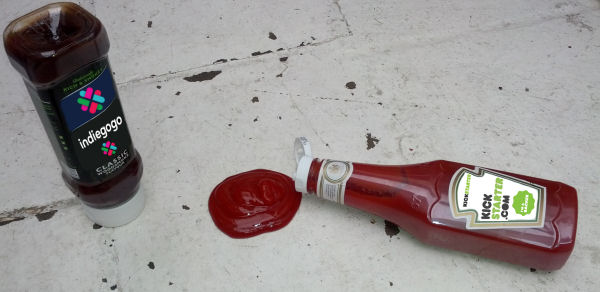Systemic Shock: Maia's Science And Stories
Devils and Details
At the first Rezzed, a year ago, I saw Maia for the first time. Back then, before the nail-biting Kickstarter campaign, what I was shown was more engine than game, an almost frighteningly impressive technical achievement, created by one person and almost tentatively shown to a few eager onlookers. A couple of days ago, I saw the game again. It isn’t finished but it was one of the most intriguing propositions at a show packed with variety.
I didn’t manage to see every presentation and panel at Rezzed because there were also games to play, people to talk to and coffee to drink, but the one that best set the tone of the event for me was hosted by our very own John of Walker. In theory, it was a discussion about storytelling in games, with a broad cast of characters – Ragnar ‘Dreamfall’ Tornquist, Dean ‘Day Z’ Hall, Will ‘ Zomboid’ Porter, Ed ‘Brink’ Stern and Chris ‘Everything Else’ Avellone.
The conversations that the audience heard, and that you can hear by listening below, gave an insight into the breadth of opinion and varied execution within the sphere of things that we call ‘game’. From the more traditional narratives, world-building and characterisation of Tornquist’s adventures and adventures, to what I think of as the collaborative storytelling of Day Z. Designers create systems and players, either in solitude or together, collaborate with those systems – and through them, the designer – to create dramas, comedies and tragedies, some spanning hours, others lasting for a matter of seconds.
I was pleased to hear Crusader Kings II mentioned, if only briefly, as it’s one of the strongest engines for narrative that I’ve ever encountered, but there was another game, one that actually made an appearance at Rezzed, that may well capture the beauty of systemic storytelling just as brilliantly. It’s no surprise that its name wasn’t spoken because it wasn’t on the show floor and hasn’t been released. The game is Maia, Simon Roth’s Kickstarted colonisation simulation, a game part sci-fi Dungeon Keeper and part Dwarf Fortress with a more usable UI and excellent graphics.
Accompanied by Paul Dean of Shut up and Sit Down and now lead writer on Roth’s project, I sat down to talk to Simon and watched as he demonstrated the incredible complexity of the world’s simulation. I use the word ‘incredible’ in its literal sense. This is a game with ecosystems, both flora and fauna acting and reacting, and with science in place of stats.
As I watched Simon construct the beginnings of a base, in caves that are protected from the violent and changeable weather that alternately bombards, burns and freezes the surface, he often hesitated as I asked about various occurrences and features. Eventually, I had to change my approach because I was looking for individual systems, wondering how health, happiness and diet were tracked and monitored, when I should have been looking at the entire simulation as one, extremely complex machine.
The doomed colonists begin their mission in an airlock, a group of chickens scratching around their feet, and can then begin the process of constructing a place to live and to work. Indeed, they live TO work. Like Sims and actual people, they have many needs to fulfil, and I asked Simon if those needs would include some sort of Fun Meter. Would they have recreation rooms, with pool tables and anti-grav chess/dance floors?
No, was the answer, they certainly wouldn’t. The colonists become unhappy if they don’t have any work to do and, thankfully, it takes a lot of work just to survive. Solar flares burn anyone foolish enough to wander outside without adequate protection. The night is as black as a good cup of coffee and without lights, people become afraid – even the I.M.P. robots can be afraid of the dark, with their intentionally rudimentary AI occasionally glitch. Most devastating of all, perhaps, are the meteors that crash into the surface. They’re capable of causing cave-ins, although this function, like many others, was disabled in the build I was shown.
Surviving is hard and it makes sense that the poor bastards stuck down there, carving out science labs, medical bays and radioactive chambers from the walls, aren’t particularly interested in hanging out at the bar. They are happiest when they’re working, and anxious when there is now work to be done, because to be idle is to invite death in one of its many guises.
So where are the health bars and the hunger bars? Hovering the cursor over a person reveals a great deal of data, but not in the form of percentages or any other abstract indicator. Instead, in sick-green seventies computer print-out fashion, a string of text stutters out of the cursor itself, listing the subject’s temperature and perspiration rate among other things. It’s a detailed medical report and as the little fellows run around the place, each individual component can be affected by exposure to the elements, by exertion, or by injury, dehydration and hunger.
Unlike Sims, they can’t be directly controlled. Tasks are set and they complete them in a sequence decided by the simulation. Everything is decided by the simulation. A hungry colonist will be more inclined to kill a chicken, or to collect its eggs, or maybe to harvest plant life by building a hydroponics centre. The player sets up a build queue, choosing the locations and size of facilities and machinery, but the colonists themselves decide when and how to tackle the tasks.
I probably spent an hour with Maia, being guided through the intricacies of the systems, but I could have spent an entire day watching the world at play, even though the actual progression, from barren wasteland to underground mega-facility, is currently lacking structure. The simulation itself is fascinating in its complexity and its ability to support ecosystems and biological functions is tremendously exciting.
At the moment, there are problems – not from lack of care but because some issues aren’t worth fixing until necessary. My favourite of all those Simon mentioned in passing is the fact that living creatures, including humans, will eat one another if no conventional food is available. Strand a human from all plant and animal life, remove all rations and trap the blighter in a room, and he’ll eventually start to eat himself. On a purely systemic level it makes sense, as does everything that’s happening.
Finding the balance will be a huge challenge, both from the design perspective and for players once they have their hands on the game, but the beauty of a game that is built around one enormous interlocking simulation of this type is that tweaking and changing it shows immediate results. Simon is also avoiding science fiction, or even game fiction – at a base level, everything in Maia is driven by energy. Actions expend energy and plants store energy, their capacity increasing as they grow. To power the machines in the base, more energy is needed, initially gathered by wind turbines, which react to the changing weather, meaning that if the wind dies down and there are no alternate sources of power, lights will flicked and eventually fail. Turrets will shut down, permitting the more unpleasant denizens of the cave to infiltrate. A bulkhead door may lock, trapping colonists on the wrong side of a lava flow. Or worse, allowing both the explorers and the lava back through the door, the former reduced to bones and ash, the latter bubbling through the base, burning as it goes.
And that brings us full circle, back to storytelling. Maia is capable of making stories even now, in an unfinished state, and it has a larger story as well, a narrative of alternate history, an impossible exploration of a distant planet with technology that is decades behind what we now possess. The game makes you believe it is possible though, even though the doors speak apparent gibberish, and the computers are primitive, with a flickering Nostromo-like glare.
The smaller stories, the ones that arise from that collaboration between player, system and designer, will be the main product of Maia’s ingenious construction. Even as I watched, knowing that there were no creatures lurking in the dark, when a generator failed and I could see the energy draining from its cells, I felt a sense of apprehension. On a workdesk, a table lamp flickered and died. Simon pointed out that even a source so small cast actual light, reflecting, illuminating anything that passed by, leaving a blank in the world when it was gone.
If the devil really is in the details, then Maia is destined to be a far more monstrous offering than Dungeon Keeper ever was. And I can’t wait to see what stories it has to tell.






